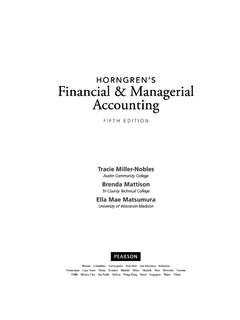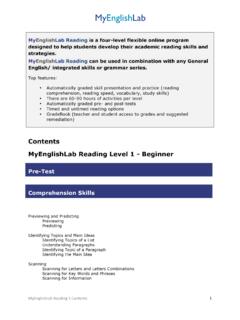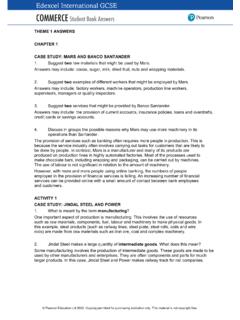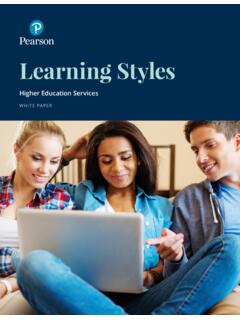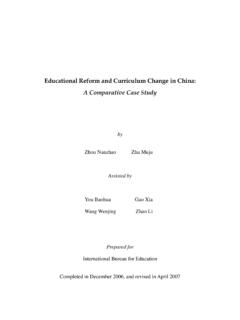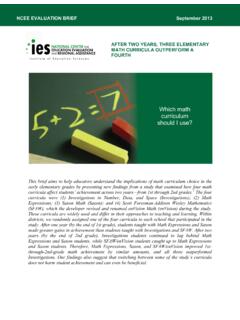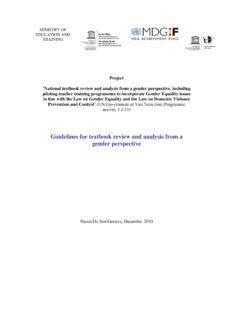Transcription of Curriculum Development Revision and Evaluation Process ...
1 2018 Connections Education LLC. All rights reserved. 1 1 Partnership for 21st Century Skills Framework for 21st Century Learning: WASHINGTON, DC 20001: 2011 Curriculum Development , Revision , AND Evaluation Process Introduction Connections Education (dba Pearson Online and Blended Learning, or POBL) has substantial resources for Curriculum Development . The company s team of talented, experienced Curriculum and assessment specialists, Curriculum project managers, content and copy editors, and multimedia designers work to ensure Connections students are presented content, instructional resources, and activities that prepare them to be active, knowledgeable participants in a global networked society.
2 These individuals apply their deep expertise in online instruction and academic disciplines to the Development of Curriculum that supports 21st century readiness for every student. Using the Framework for 21st Century Learning1 Process , they work to integrate supportive technologies, inquiry- and problem-based instructional approaches, and higher order thinking skills into all Curriculum Development efforts. Connections Education aligns its Curriculum to the Common Core State Standards as well as individual state standards, and also reviews and aligns with national standards such as the Next Generation Science Standards (NGSS), national Curriculum Standards for the Social Studies (NCSS), and International Society for Technology in Education (ISTE) wherever possible.
3 Finally, Connections Curriculum Development is guided by iNACOL standards for quality online courses. Connections Curriculum Development is guided by these key principles and tenets: Curriculum fosters breadth and depth of understanding in the subject area. Content is aligned to national and state standards. Curriculum is supported by quality, reputable, recently published textbooks and/or proven instructional resources and materials. Content and assessments are aligned, accurate, and unbiased. Content is current, relevant, and provides real-world applications. Content is appropriate for the learner (age, ability, background, reading level, learning style, etc.). Instructional design is adaptable and flexible in order to best meet individual needs of Learning Coaches and students.
4 2018 Connections Education LLC. All rights reserved. 2 Instructional design provides students opportunities to improve learning skills using technological tools ( , virtual labs, interactive tools, Teachlet tutorials, business software, and online calculator). Navigation is intuitive and age-appropriate. Lesson structure is consistent and supports learning sequence of motivation, instructional content, application activities, review of key concepts and assessment. Scope of course is appropriate with regard to the amount of content, length of course and lessons, and course requirements. Lesson introduction effectively presents lesson objectives, assesses prior knowledge, setsexpectations, and motivates.
5 Background information prepares students to access new content, skills, and strategies. Curriculum includes opportunities for developing problem-solving and critical thinking skills and real-world applications. Curriculum includes opportunities for collaboration and independent study. Curriculum includes opportunities to develop oral and written communication skills. Curriculum incorporates timely and appropriate feedback to students. Key Systematic ProcessesCentral to the Connections Curriculum design Process is the systematic analysis of Curriculum offerings. The analysis phase consists of formative, summative, qualitative, and quantitative measures to determine the value and effectiveness of the Curriculum offerings.
6 This multi-level Evaluation system incorporates regular reviews of student performance, user feedback, assessment performance analysis, and district, state, and national content standards and assessments. Connections Curriculum Development also emphasizes innovation, effective implementation, Evaluation of student learning, and continuous improvement, and the company strives to regularly provide new Curriculum options that leverage the interactivity and engagement potential of online resources. Connections always seeks to balance enhancements and additional options with the recognition that students have a wide range of learning styles and needs. Decisions about improvements and updates to the Curriculum are also guided by feedback from a variety of critical stakeholders: teachers and administrators, students and parents, school boards, and outside evaluators such as accrediting organizations and sponsors.
7 This feedback is collected both daily and annually in a variety of ways, including the Connections StarTrack system and Connexus feedback tools; annually through Parent, Student, and Staff Satisfaction surveys; and throughout the year from professional Development and leadership Development activities with teachers and school administrators. Comments and input from board members and the results of third-party evaluations also often factor into changes to Curriculum . 2018 Connections Education LLC. All rights reserved. 3 Connections Education understands that clear processes and guidelines that ensure internal consistency, instructional effectiveness, and the appropriate use of intellectual property are essential to the Development of quality online courses.
8 Therefore, central to the Connections Curriculum Development Process is a research-based agile Development framework designed to support not only quality course Development but a feedback loop that ensures continuous improvement. This agile Process is incorporates the elements of analysis, design, Development , implementation, and Evaluation . 1. Analysis: A thorough analysis of state graduation requirements, school or board requests, and competitive positioning is completed. Feedback on current courses from student academic performance, user feedback, usability reviews, and national and state standards alignments are incorporated into the analysis and this analysis is ongoing through the Development Process .
9 2. Design: Within the design phase, the Curriculum team attends to the set of standards around which the course is written, instructional strategies, content, and visual and technical design of the course. Attention is focused on the course s purpose and audience, as well as the course s organization, instructional approach, and instructional resources. Consideration is also given to the role of technology, the level of student engagement, and student learning styles. 3. Development : To provide a blueprint for course Development , a map is completed which focuses on standards alignment and the identification of the enduring knowledge present in the course. The Development lifecycle incorporates assessment mapping, unit-by-unit course Development and Revision , content analysis and review, editorial review and Revision , and a detailed quality assurance appraisal.
10 Procedures for ensuring internal consistency, bias-free content and assessments, instructional effectiveness, and the appropriate use of intellectual property are implemented throughout the Development phase. 4. Implementation: Although user testing is implemented incrementally, each school year brings the full implementation of newly developed courses. Before full release, demonstrations of new content and structure is conducted, feedback is gathered and suggestions are implemented. When courses are completed, they are presented to students, teachers, and Learning Coaches within Connexus , and effective implementation is supported by updated and ongoing training for all. 5. Evaluation : The intent of the Evaluation phase is to determine the level of student success, and the impact of the course design on student performance.
